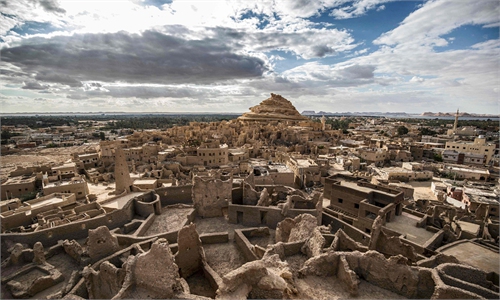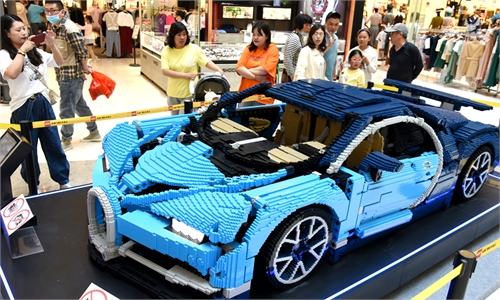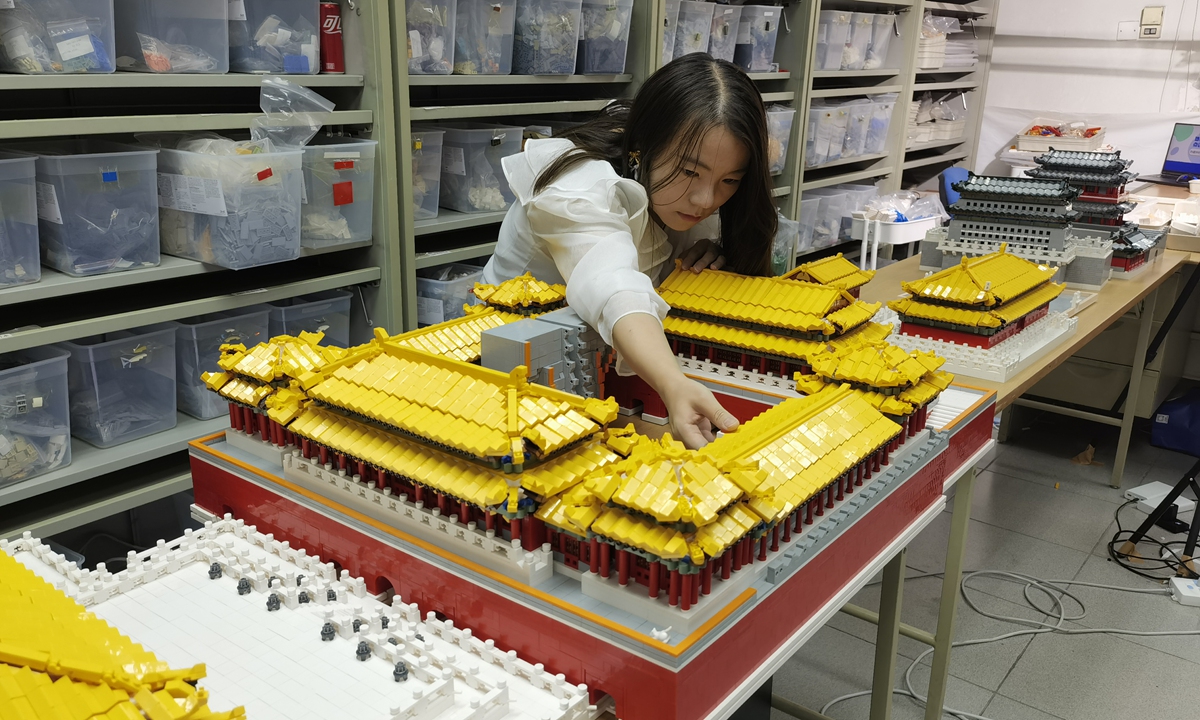
Chen Xi works on a building-block work of the Forbidden City Photo: Courtesy of Jiang Buting
Editor's Note:How can art and culture from the past survive in a globalized world? While attempting to inherit the treasure of art and culture thousands of years old, young Chinese have created a new trend - Guochao, or China chic. It refers to a movement first started by young people endeavoring to revive and reinvent China's traditional culture.
Fashion designers have drawn inspiration from the precious murals inside the Yungang Grottoes, and traditional instrumentalists are creating new trendy music on the pipa. These young Guochao trendsetters have helped China's cultural legacies to be passed down and preserved for future generations.
To better understand this new approach to cultural preservation, the Global Times has conducted a series of interviews with young innovators to learn about their interpretation of Chinese culture. In this installment, the art of recreating iconic Chinese buildings using building blocks is revealed.
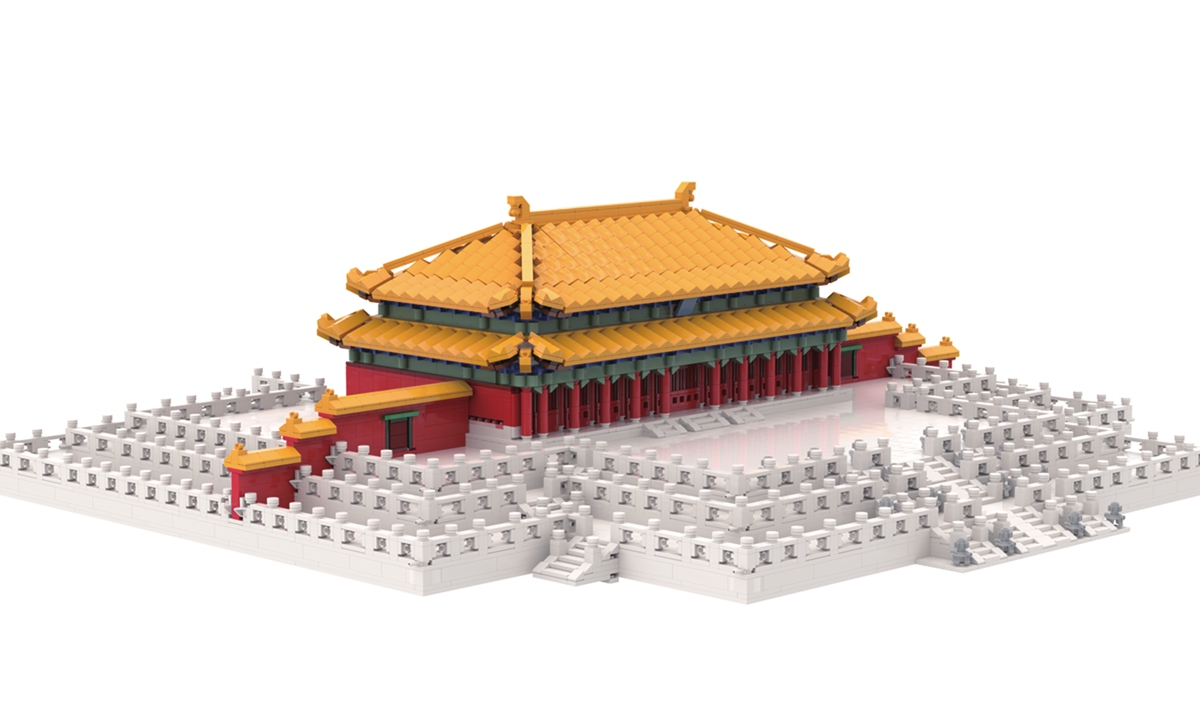
The Taihedian model created with building blocks Photo: Courtesy of Jiang Buting
From Yongdingmen to Gulou and Zhonglou, 18 iconic landmarks along Beijing's Central Axis have been concentrated in a 16-meter-long panoramic building-block world. These works are produced by a millennial couple, Jiang Buting and Chen Xi, who spent 90 days using more than 130,000 building blocks to recreate the traditional buildings, with an aim to help boost the Beijing Central Axis' chances at gaining UNESCO World Heritage status.
"Building blocks are recognized globally for their recreational value, and we understand the building of building blocks as a borderless artistic language. Building blocks allow us to consider a new perspective on how to protect intangible cultural heritage and cultural relics in a new way, and spread traditional Chinese culture through this universally entertaining way, so that the charm of Chinese culture can be seen by the world," Jiang told the Global Times on Sunday.
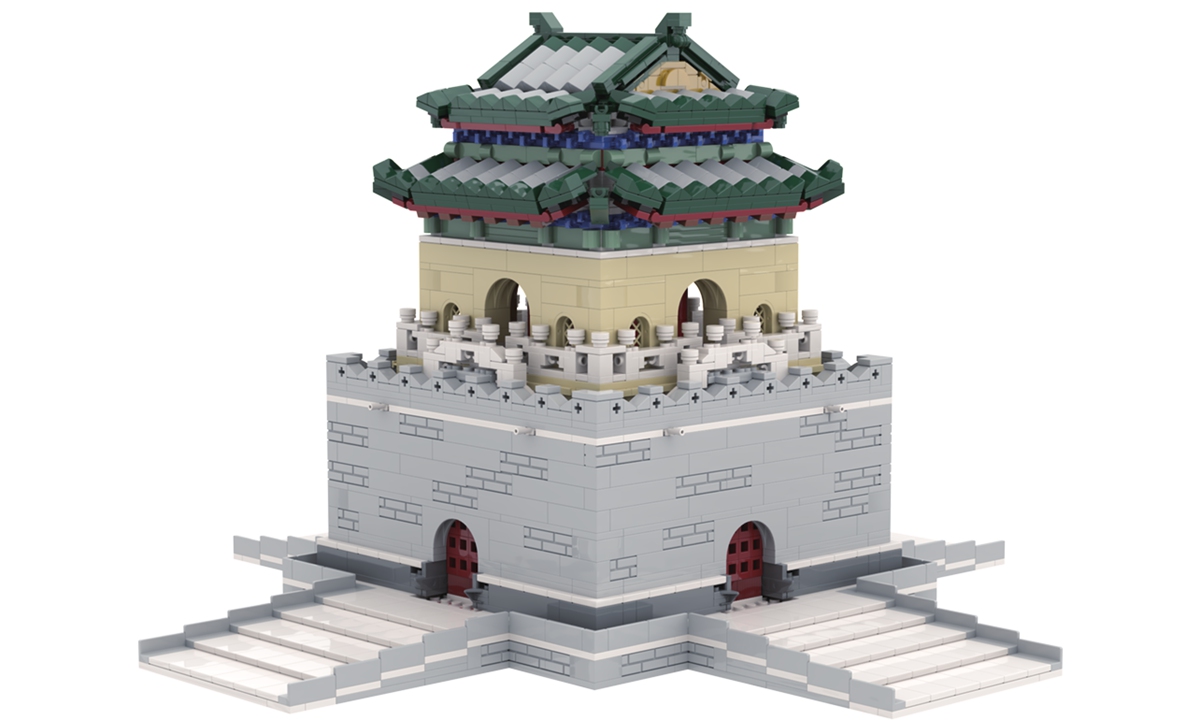
The Zhonglou model created with building blocks Photo: Courtesy of Jiang Buting
Conveying cultural connotation
The pair uploaded the footage of their creations on the video-sharing platform Bilibili, where many netizens expressed their admiration. However, the process was not easy.
Before the assembling process could begin, a lot of preparation had to be done. First, they used computer-aided design (CAD) software to convert the survey map into a three-dimensional model and then used the actual image and converted measurements from CAD to virtually assemble the building-block models.
After the virtual assembly was completed, the software generated a list of parts to be used numbering in the tens of thousands, that had to be sorted and assembled. Jiang told the Global Times that one of the difficulties was how to use fixed-shape blocks to show the spiritual essence of traditional Chinese architecture.
"For example, we will use white ice cream-shaped parts to restore the appearance of pillars, and black banana parts to restore the roof overhang," Jiang said.
The other difficulty is how to use building blocks, a modern material, to interpret and express the construction logic and wisdom of ancient Chinese architecture, truly conveying its cultural connotation.
When restoring the Jiaolou, they did not add a pillar to support the indoor space, following the original construction logic of the building, although it was not easy to see in the model.
"We not only restore the appearance of these buildings, but also try to use building blocks as modern material to restore Chinese ancient architecture in a way that truly shows its construction logic and wisdom," Jiang noted. "We think we can create any scene we want with building blocks."
The pair has undertaken many building-block recreation projects, including China's aerospace aviation series, Tsinghua University's 100th anniversary celebration building series, Big Air Shougang, the Beijing 2022 Winter Olympics open-air event venue, and many animation scene restorations, novel-themed builds, and so on.
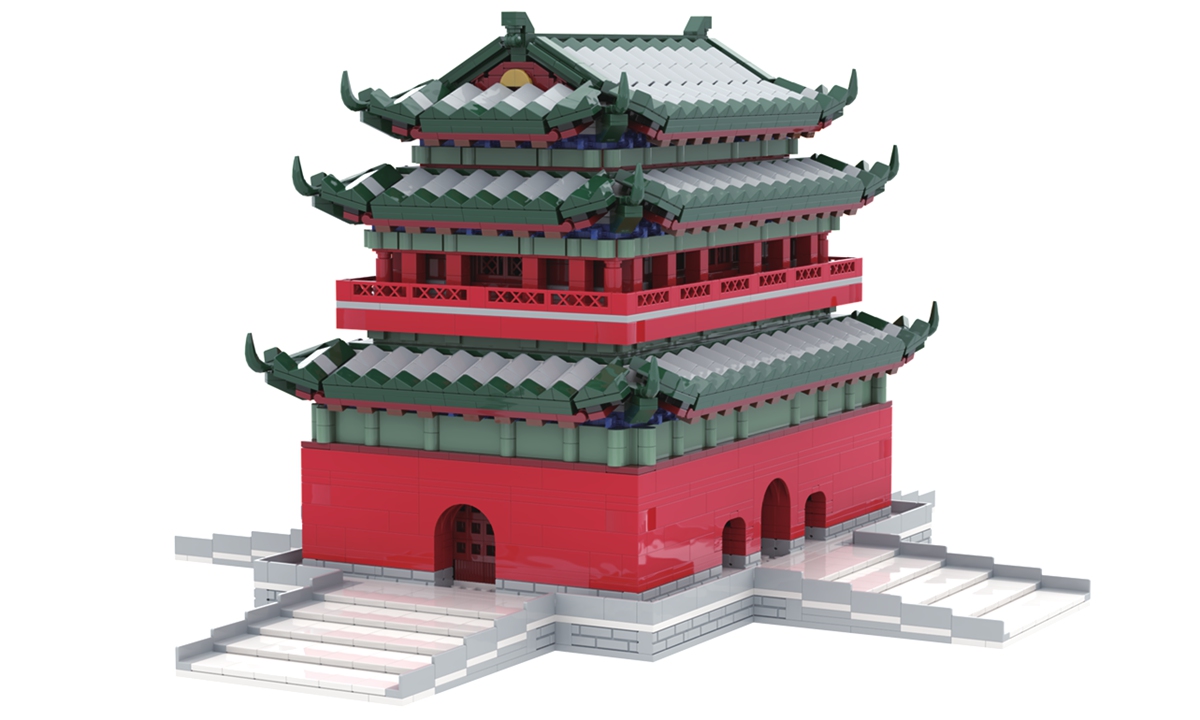
The Gulou model created with building blocks Photo: Courtesy of Jiang Buting
Indispensable part
"When we go to visit Yuanmingyuan today, we can only see the remains of buildings destroyed by fire. In order to restore them, we needed to read a lot of historical records about the scenes to recreate them," he said.
In the Yuanmingyuan restoration process video, not only are there ancient buildings, hills, and trees shown, but people are also incorporated as an indispensable part of the recreated landscapes, with every detail vibrant and well-executed.
"We choose to use building blocks to interpret traditional Chinese culture, because they are a material that is suitable for all ages and can be used by everyone. The simple and rich connection methods greatly encourage more people to participate enthusiastically," Jiang said.
This year marks the 10th anniversary of the Belt and Road Initiative (BRI). The pair used building blocks to recreate the ship used by legendary Chinese navigator Zheng He on his voyages to the coast of East Africa.
In 2022, the couple recreated the pavilion described in the Zuiwengting Ji, a famous essay by Ouyang Xiu (1007-1072).
In addition to the pavilion, they incorporated fishermen on the lakeside, woodsmen chopping down trees on the mountainside, farmers making wine in a wine cellar, and guests playing chess or shooting putts in front of screens.
According to Jiang, the couple is planning to recreate the scene described in The Peach Blossom Spring Story written by Jin Dynasty (265-420) poet Tao Yuanming of an ethereal utopia as described in the tale.
"We believe that wider public participation can turn cultural dissemination into a phenomenon, and more and more people will participate, co-create, and spread Chinese culture through this way, to make ancient Chinese architecture truly available to thousands of households," Jiang said.
